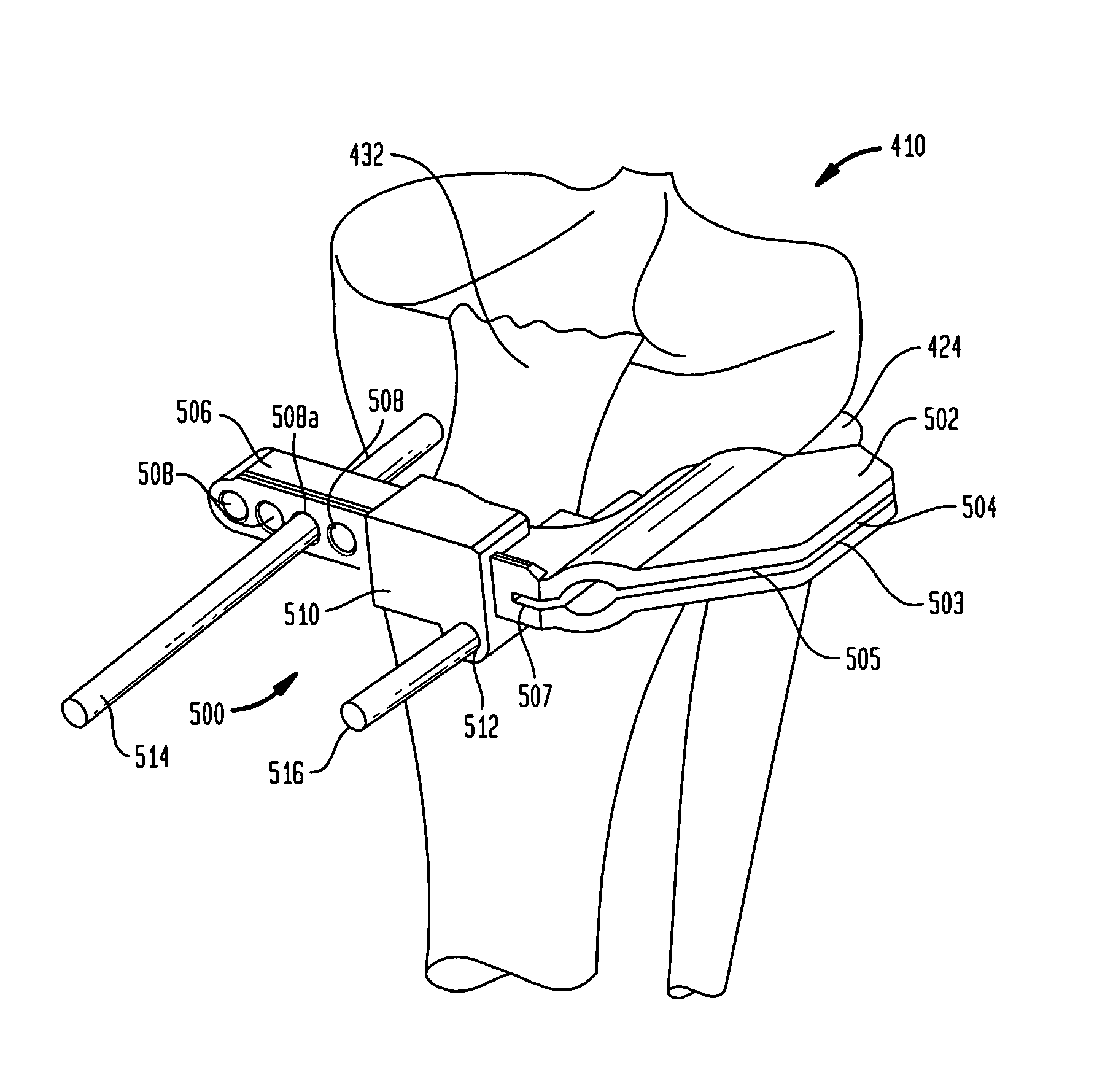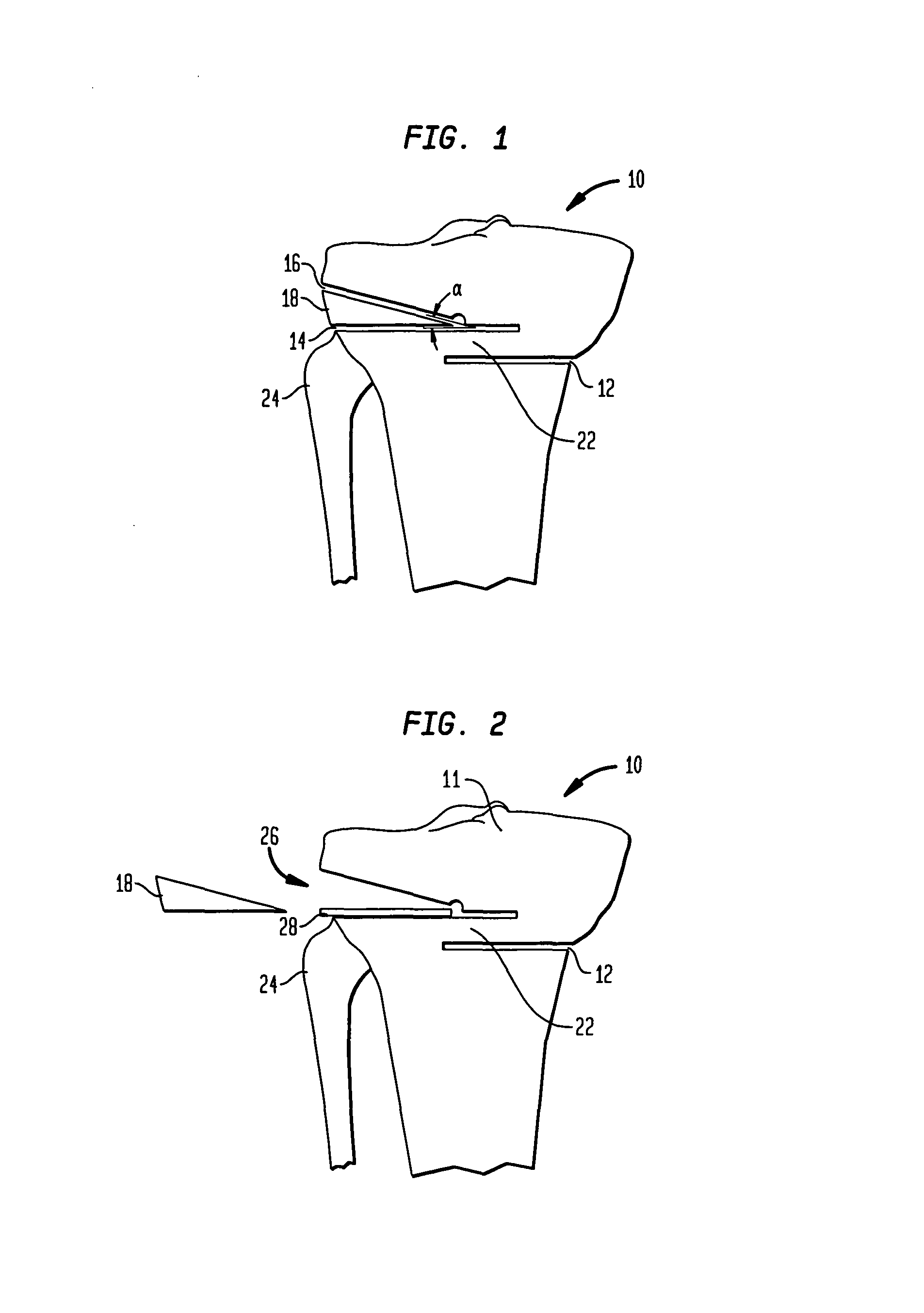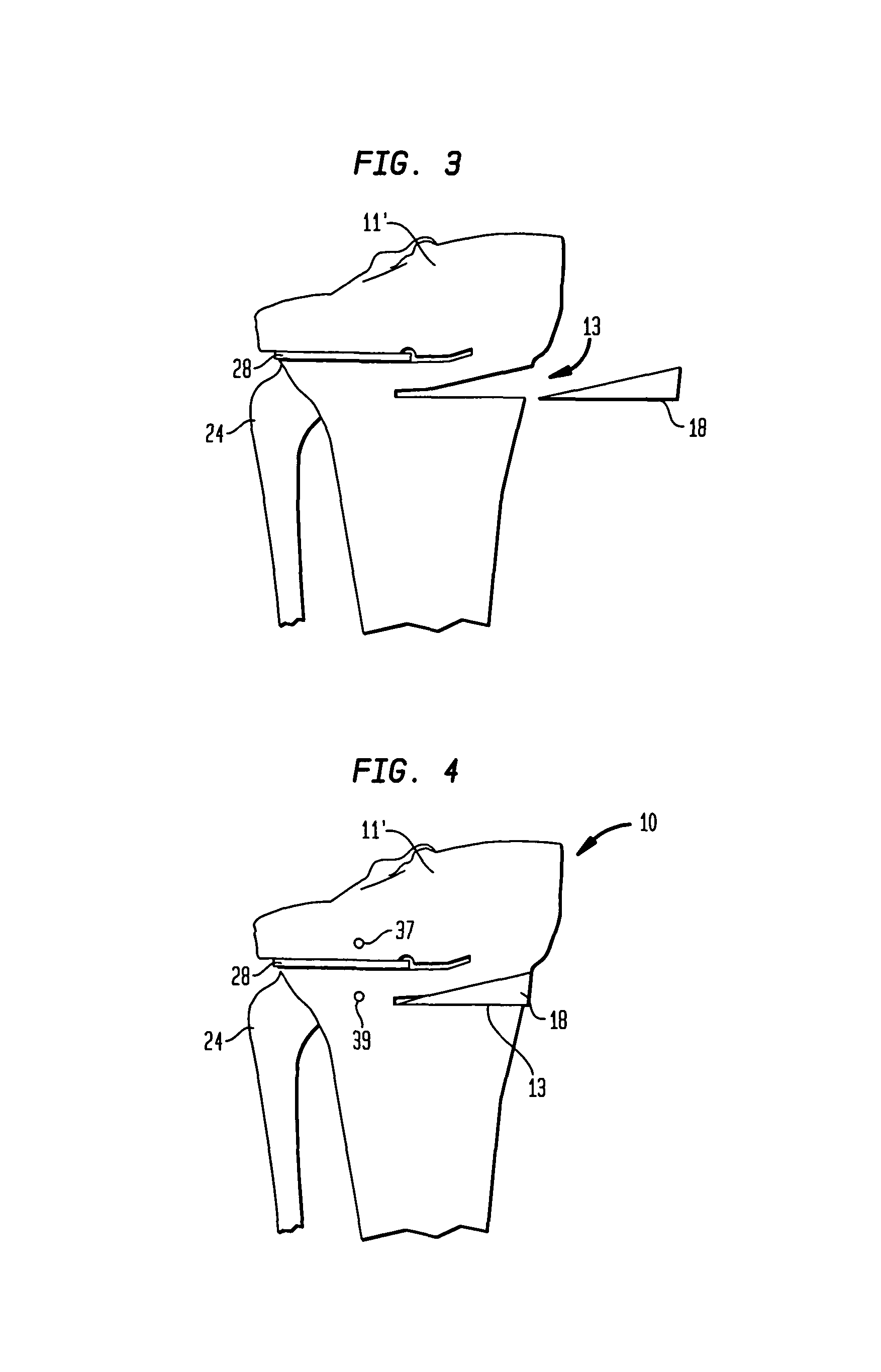High tibial osteotomy system
a high-tibial osteotomy and tibial bone technology, applied in the field of high-tibial bone osteotomy system, can solve the problems of varus or valgus defect in the tibia, increased loading on the medial joint compartment, and increased loading on the lateral joint compartmen
- Summary
- Abstract
- Description
- Claims
- Application Information
AI Technical Summary
Benefits of technology
Problems solved by technology
Method used
Image
Examples
Embodiment Construction
[0045]In describing the preferred embodiments of the subject matter illustrated and to be described with respect to the drawings, specific terminology will be resorted to for the sake of clarity. However, the invention is not intended to be limited to the specific terms so selected, and it is to be understood that each specific term includes all technical equivalents which operate in a similar manner to accomplish a similar purpose.
[0046]Referring to the drawings, wherein like reference numerals represent like elements, there is shown in FIGS. 1-4, in accordance with one embodiment of the present invention, an anterior view of the right tibia 10 with a series of cuts which can be used to complete an HTO procedure. The illustration in FIG. 1 shows exemplary locations for cuts in an HTO procedure used to correct a varus defect on the proximal tibia 11; however, as would be understood by one having reasonable skill in the art upon reading this disclosure, the procedure of the present i...
PUM
 Login to View More
Login to View More Abstract
Description
Claims
Application Information
 Login to View More
Login to View More - R&D
- Intellectual Property
- Life Sciences
- Materials
- Tech Scout
- Unparalleled Data Quality
- Higher Quality Content
- 60% Fewer Hallucinations
Browse by: Latest US Patents, China's latest patents, Technical Efficacy Thesaurus, Application Domain, Technology Topic, Popular Technical Reports.
© 2025 PatSnap. All rights reserved.Legal|Privacy policy|Modern Slavery Act Transparency Statement|Sitemap|About US| Contact US: help@patsnap.com



